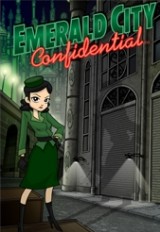Review for Ceville

After reigning over his land for many years and basking in the glory of outrageous riches and power, the vertically-challenged Ceville has finally been forced out of his castle for his debut adventure, and it’s a good thing for everyone that he has. For Ceville, it means a new opportunity to mischievously humiliate and degrade his former subjects in a bid to regain the throne (all the while having a laugh). For gamers, the appropriately-named Ceville offers a conventional but pleasing blend of comedy, adventure, and just plain fun.
Ceville is set in the land of Faeryanis, a fantasy kingdom long ruled by the greedy little tyrant. He has run the country with a firm hand on law and order as a self-described “undemocratically elected despot”. Inconveniently for Ceville, however, regime change is in the air. The tale begins as Ceville is dispensing “justice” in his own inimitable way. Suddenly, he is interrupted by two of his guards, who announce that Ceville has been removed as king by the citizens of Faeryanis. His replacement is his former confidant Basilius, who plans to rule with an even greater authoritarian hand than Ceville. Naturally, this is not welcome news for a maniacal dictator with a Napoleon complex, so players must embark on the quest to replace him rightfully (or wrongfully) back on the throne.
At the start of the game, the player assumes control of Ceville, doing everything possible to stay out of the clutches of the public mob set to oust him from power. But while Ceville’s list of enemies proves to be taller than the floor-to-ceiling statue of himself that adorns his throne room, he is not forced to make his trek alone. Aiding him is Lilly, a clever, somewhat naïve little girl from Faeryanis who believes Ceville can be reformed and restored to the throne as a compassionate ruler. Players will control a third playable character, Ambrosius, a rather pompous paladin whose opinion of himself far outweighs his actual abilities, for a short time as well. However, the vast majority of time is spent playing as Ceville and Lilly, sometimes simultaneously.
When involved in an adventure with two characters virtually glued at the hip, it is critical that the personalities complement one another. Fortunately, Ceville succeeds in this regard, as the titular anti-hero provides the comic relief with his naughty nature and sly comments, while Lilly displays her compassionate streak and extreme tolerance for Ceville’s self-serving remarks and behavior. Together they have terrific chemistry, and the duo must work together to solve puzzles at times, utilizing each other’s strengths as they explore the lands in and around Faeryanis.
While Ceville certainly offers a different take on the good-guy/bad-guy routine (restoring the evil dictator back on the throne from the even more evil dictator), overall the story is pretty straightforward. Ceville and Lilly find themselves moving through fairly traditional fantasy locations, from the castle’s torture room to dwarf mines to an elven forest, where they encounter a fair number of intentionally silly obstacles in their dealings with fairies, goblins and demons, not to mention the figurative monster of political bureaucracy. Along the way, they’ll meet a wide array of interesting characters, including a chain-smoking black knight, an ex-pirate captain, an environmental-activist elf, and a cat with a black eye patch.
The humor in Ceville stems in part from the title character’s smart remarks and the clever repartee with his young sidekick. However, the supporting characters contribute to the funny dialogue as well, like the two soldiers standing guard at the city gates of Faeryanis – one tall and bulgingly fat, the other short and squat – constantly insulting one another to pass the time. But the comedy also stems from the situational humor, such as when Ceville and Lilly find an elf chained to a tree with a dwarf in a suit operating a tree saw. There are lots of little moments like these, and while Ceville can’t really be characterized as laugh-out-loud funny for the most part, it does succeed in keeping a constant grin on your face while you play.
The game plays like a traditional point-and-click, third-person adventure, with no real interface surprises. Left and right clicks perform all major functions, and the inventory is always visible onscreen for easy access. A quick travel map is introduced at one point, which cuts down on backtracking time, but you’ll want to spend at least a little time watching the stubby-legged Ceville totter around at his double-click run speed, as his gait is truly comical. The only real difference from most adventures is the ability to control multiple characters, though even here, Ceville makes no attempt to reinvent the wheel. It is easy to switch instantly between playable protagonists by simply clicking on their portraits.
The game also includes the welcome hotspot highlight feature, which definitely comes in handy at times. The problem isn’t that objects are hard to see, but the moving camera angles can make it difficult to distinguish one interactive item from another. You may think you’ve pinpointed all the hotspots available, not realizing that you’ve missed something until the screen shifts after moving the character. There were even times when I had to finesse the cursor around an area on the screen in order to pick up an object, even when I knew exactly what I wanted and where it was positioned. It’s not a huge problem, but without resorting to the highlight option, you may find yourself sweeping the cursor in a meticulous fashion, like a metal detector over a portion of land in order to find relevant objects.
While any experienced adventure gamer will feel right at home with Ceville’s interface, the game does try to be accessible to genre newcomers. Rather than having a tutorial at the start of the game, however, Ceville takes an interesting approach while new game environments are being loaded. The screen switches to an artistic rendering of a character in one of the picturesque backgrounds, along with two or three lines of text which begin “Did you know…” and proceeding to give a helpful tip about a feature in the game. There are roughly a dozen of these, ranging from keyboard shortcuts to small hints about how a particular object can be used in the game. Not only does this ease the annoyance of the load times themselves, but the clues just might yield some worthwhile tips for those who are paying attention.
Having said that, it’s unlikely that you’ll need too much help to progress through Ceville. Throughout the game are multiple object combination puzzles, along with some timed sequences and even a music puzzle. These aren’t as daunting as they may sound, however. The sound puzzle can be accomplished without being tone-proficient, as the notes themselves are visually depicted as they are played. The timed puzzles are indeed puzzles, not tests of dexterity, simply giving you a limited amount of time to piece together a solution as a clock counts tauntingly down onscreen. There’s no real punishment for failure, though, as you’re simply returned to where you started to try again. The inventory puzzles aren’t particularly difficult, but they do require time and effort to procure the correct item or piece of information, often needing a combination of objects to proceed. Fortunately, while many of the puzzles have a rather zany premise, the results are fairly logical, avoiding some of the sheer absurdities of some comic games.
Visually, Faeryanis is beautiful in its cartoon-like way, with a wide selection of resolutions, detail options, and even widescreen support to help it stand out. The castle is a nearly ubiquitous background object, and the areas that surround it are vibrantly colored and nicely detailed with clear blue skies and lush green landscapes. The game looks and feels much like other 3D comic adventures, with caricatured people and exaggerated objects, like swords almost as large as those carrying them and a huge throne that dwarfs its pint-sized occupant. The environments aren’t exactly teeming with activity, but there’s always a touch of ambient animation bringing the world to life, and a generous number of in-game cinematics give the presentation a welcome richness.
The voices in Ceville are equally well done. Many have distinctive accents and lines are intoned in a way that makes them entertaining to listen to. There are subtitles available, but this is one of those rare occasions where you may actually want to let the full lines play out. Particularly noteworthy are the two main characters, Ceville and Lilly, as their conversations come across as very natural, and the two actors seem to be perfectly cast. The lone irritation is the chatter that goes on by background characters. When Ceville is placed in jail after the coup d’état, imprisoned with him is an old man chained to one of the walls. Far too frequently, he begins a repetitive cacophony of ranting and raving, including one annoying scream for help. After having listened to this for two or three cycles, I seriously considered turning the sound off until I managed to escape. The same is true in at least two other environments, with supporting characters constantly talking to the point of distraction from the work at hand.
Turning the sound down would mean missing out on the music, however, and this is one of the elements that makes Ceville stand out. The soundtrack is entirely instrumental, changing periodically as the characters move through various environments and situations. However, it is incredibly melodic, with harmonized strings or flutes setting the playful tone for whatever situation the characters find themselves facing. The ambient sound effects aren’t particularly notable, but the subtlety allows the dialogue and music to take precedence, as they should.
Despite a few awkward moments and the scarcity of thigh-slapping comedy, Ceville is nevertheless one of the better recent comic adventures, with excellent cartoony graphics and delightful music combining with the irreverent humor to add much to the whimsical nature of the game. Apart from the slight twist of controlling a very non-traditional protagonist, the storyline itself is very conventional and offers nothing really unique, as can be said of the gameplay driving it. Yet the characters are as diverse as they are numerous, and the chemistry between the two leads makes for a light-hearted, fun adventure with about 12-15 hours of solid gaming for a wide range of ages and adventure game experience. If Ceville were a food, it could be described as a new kind of comfort food, perhaps best summed up by the despot himself: “disgustingly good”.









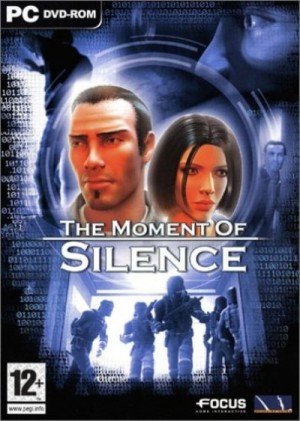

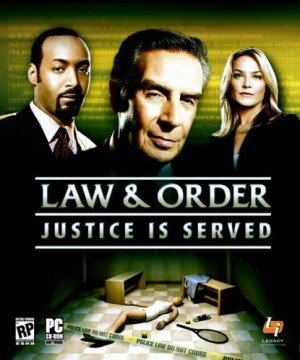
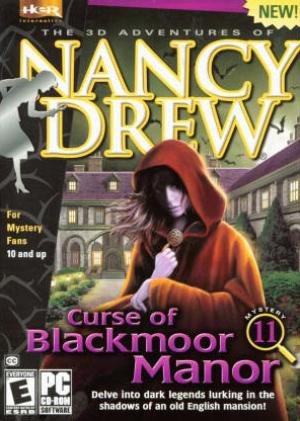
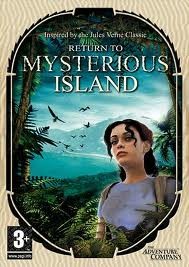
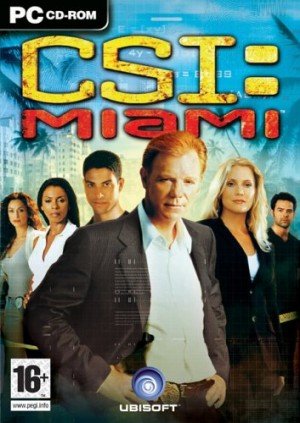







__small.jpg)


